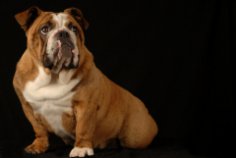
Dogs were the first animals domesticated by humans. This was crucial to their existence. A keen sense of smell, sensitive hearing, strong and swift legs, robust teeth, and a highly developed psyche—all these qualities were inherited by dogs from their wild ancestors, wolves and jackals. Humans sought to preserve and refine these useful traits through selective breeding, depending on the dog's intended purpose: guarding a home or flock, assisting in hunting, or simply entertaining their owner. Today, over 300 dog breeds are known.
All breeds are divided into three groups: service, hunting and indoor (decorative).
Service dogs include shepherds: East European, German, Scottish (collie), Caucasian, and South Russian. These are large, strong dogs. They are used for border patrol, criminal investigation, and herd guarding. Newfoundlands and divers (rescue drowning people) are also service dogs. St. Bernards are also rescue dogs, specially trained to search for lost hikers in the mountains.
Hunting dogs include the Laika, Borzoi (Russian Psovaya, Russian Steppe), Hounds (Russian, Russian Piebald, Estonian), Setters (Irish, English, Scottish), Spaniels, Fox Terriers, and Dachshunds. The Russian Borzoi breed was developed in Russia. They are very fast and strong dogs. Dachshunds are used to hunt badgers and foxes. Squat and flexible, they easily penetrate deep burrows. Fox Terriers are also suitable for this type of hunting. Hounds are courageous and hardy. They drive game toward the hunter. Setters and Spaniels hunt forest and marsh game.
There is also a large group of toy dogs. These include small lap dogs, toy terriers, pinschers, Scottish and miniature terriers, spitz, miniature poodles, Pekingese, Japanese chins, Chihuahuas, and others.
Service dogs are very attached to their owners and are easy to train. They make excellent watchdogs, good companions on long walks, and reliable and devoted protectors. While East European Shepherds, Terriers, and Collies can be kept indoors and outdoors, Doberman Pinschers, Boxers, and Great Danes—all short-haired—can only live indoors. Large and strong Caucasian, Central Asian, and South Russian Shepherds, Moscow Watchdogs, and Water Dogs are suited to outdoor living and are not recommended for apartment living.
A dog reaches sexual maturity at 8-10 months. A female dog is bred at around 2 years of age. Gestation lasts 60-65 days. Females of large breeds give birth to 5-7 puppies, while dwarf breeds give birth to 2-4. A good puppy can be purchased from a service dog club; every purebred dog must have a pedigree listing all ancestors for four generations.
From the moment a dog arrives, it will require care and attention. It's best to arrange a permanent spot for it in advance. The bed should be slightly elevated above the floor and covered with a tarpaulin, burlap, or canvas. For medium-sized and large dogs, a rug on the floor is sufficient. It should be shaken out daily, aired, washed periodically, and dried in the sun. For gentle, heat-loving lap dogs, a crate or basket with soft bedding is usually provided. The dog should enjoy its location. The bed should not be placed near heating devices. It is not recommended to place the puppy on soft chairs, sofas, or in bed; try to handle it as little as possible. Dogs begin to learn their name and recall almost simultaneously. The command should not be replaced by other words. Adding unnecessary words to a command makes it more difficult to develop a conditioned reflex.
As you can see, before getting a pet, you need to learn about the breed, personality, and care. Our sweet four-legged friends become part of the family. We are responsible for the animals we tame, and if we adopt a dog, we do so only in good hands.
There are no boundaries when it comes to showing love to your pets. Some take their dogs to trendy dog clothing salons, others give them manicures, and still others even throw entire weddings. But there's one fundamental, essential thing that keeps a dog well-groomed and happy: good nutrition, care, and disease prevention.
Feeding dogs. Puppies are fed 6 times a day (with a night break of no more than 7-8 hours). The approximate volume of food in each feeding is 1-2 cups. The daily diet for puppies of large breeds (East European Shepherd, Doberman Pinscher, pointer) aged 1-2 months should be approximately as follows: milk – about 500 g, meat – 150-200 g, cereal – 100-150 g, bread (gray) 50 g, vegetables and greens – 50 g, table salt, calcium salts, fish oil – as recommended by a veterinarian. For puppies of smaller breeds (fox terriers, dachshunds), the diet is half as much. At least 20-25% of the meat is given raw (minced meat, scrapings), the rest is cooked, chopped and added to the general feed. From the age of one and a half months, it is useful to give the puppy bones to chew. Tubular bird bones should not be given to dogs; when chewed, they form sharp fragments that can injure the intestines and stomach and kill the dog.
Puppy diets include cottage cheese and a raw quail egg. One- to two-month-old puppies are given chopped carrots, beets, and cabbage; if these are unavailable, multivitamins are given. Uneaten food is discarded and given only at the next feeding. Adult dogs are fed twice a day, with fresh, clean water always available in the bowl. From one and a half months, dogs should be taken outside, preferably immediately after feeding. During the first two months, dogs are teething, during which time they are given large bones and rubber toys to chew on.





